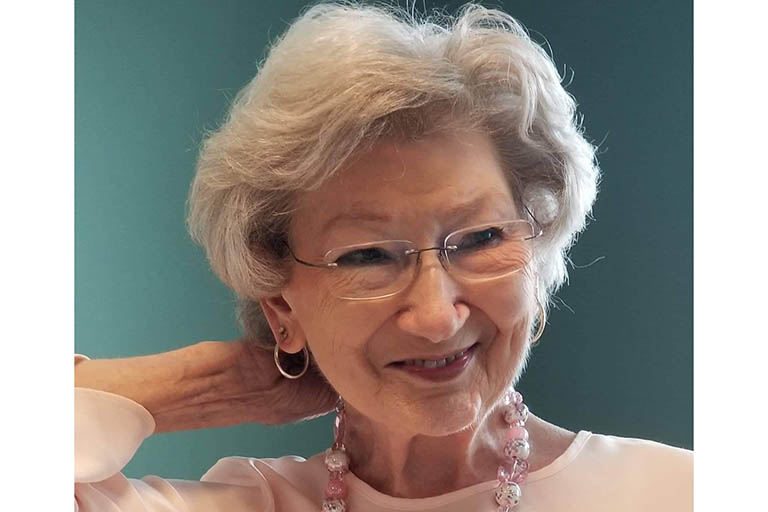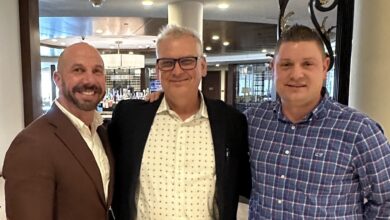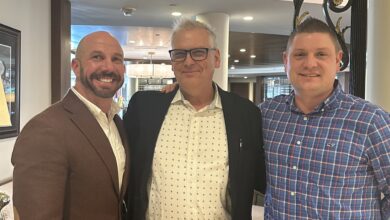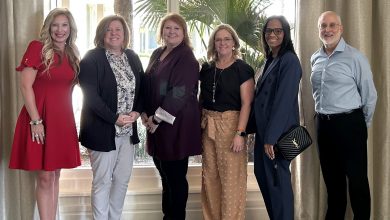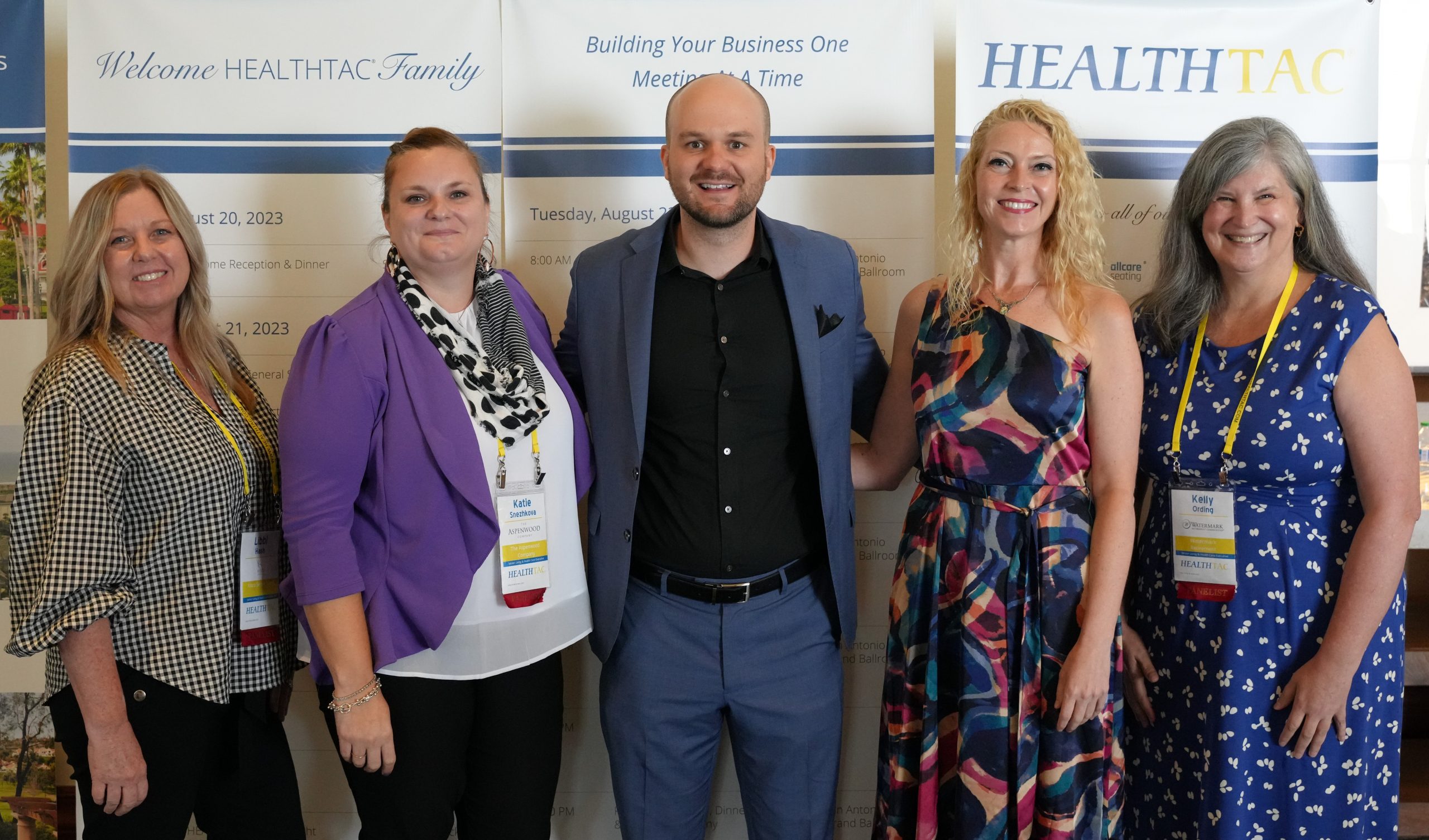
HEALTHTAC West Panel: Unveiling the Future of Memory Care: Trends and Breakthroughs
By Jim Nelson | September 8, 2023
SAN ANTONIO, TX — Four experienced ladies from the senior living industry spoke about memory care at the 2023 HEALTHTAC West conference at the La Cantera Resort & Spa. With a packed ballroom as their audience, the panelists gave their perspectives in a session titled Unveiling the Future of Memory Care: Trends and Breakthroughs.
The panel was moderated by Matt Reiners, co-founder & VP of Eversound. He began with some sobering statistics. “An estimated 6.7 million Americans aged 65 and older are living with Alzheimer’s in 2023. Seventy-three percent are aged 75 or older, and as the size of the U.S. population aged 65 and older continues to grow the number of Americans with Alzheimer’s or other dementias will grow as well.”
With that data as the backdrop, Reiners asked panelist Sarah Thomas, the CEO of Delight by Design, what’s innovative and exciting these days.
“There are people in the room looking at lighting and nutrition in different ways, and how we’re looking at human-centered design so that people can be where they want to be and yet we can still capture movement analysis,” Thomas replied. “Like with Nobi having a beautiful aesthetic, but able to also look at prediction of falls and change of behavior in an ambient way so that it’s not so intrusive to the human experience. What excites me is that we’re finally also looking at meeting someone where they’re at, where they want to go, and help them to get there in our communities, as well as in their disease process. I know we are working with the human and not just disease, but now there’s a lot of research around things that we can do for mindfulness training and cognitive retraining. Technologies like MyndYou has an early capture of a change of your voice control and an early detection of cognitive change, [making it] able to actually intervene sooner by capturing that voice change.”
What about the balance between high touch and high tech in the memory care world, Reiners wondered.
“I think that a lot of the technology in memory care is unobtrusive,” said Kelly Ording, National Director of Memory Care for Watermark Retirement Communities. “It needs to be something that kind of lives in the background and can help support that person. So any adaptations need to blend with what is already going on, and not kind of be screaming in the middle of the room.”
“For example, Eversound,” added The Aspenwood Company’s Organizational Director of Life Enrichment Katie Snezhkova. “That’s not a plug, but a perfect example of how we can make a day in memory care better for a resident. If they have some hearing loss, and you’re trying to talk to them about Italy or something, and they can’t hear, they’re not comprehending, they’re withdrawing, and they want to stay in their room, they feel isolated, and then you put the headphones on, and they can hear, they can participate, they can start to enjoy programming. Eversound in our communities has been really a great touch to promote that the little simple technology like headphones is making our residents more inclusive and participating, and holding off that decline of dementia.”
“When you talk about technology, and you talk about the advances,” said Libbi Hash, National Director of Art of Living Well for Kisco Senior Living, “there’s something out there that isn’t talked about as much and that I’m sure somebody in this room either has or can create: What technologies are we also using to support the staff? Because those are your golden nuggets; if they’re choosing to work in your memory care environment that’s a special, unique individual. What are we doing from a technology basis to make their lives easier?”
Reiners also asked about dementia-related technology solutions.
“It is everything from creating operational efficiency to allow for that high touch environment down to the granular experience of the individual solutions,” Thomas said. “Looking at something like MindMics, where they’re actually capturing your heart rate and able to monitor your specific biofeedback through the earbud. You are using biofeedback to control your emotion and reaction to things and understand as an informed consumer your own health benchmarks. These are technologies that we’re going to start to use as consumers at every age and at every turning point.”
Reiners’ panel ended with an open question about advice that panelists have for vendors who are creating products for people living with dementia.
“Check the lens that you’re looking through,” Hash offered. “Are you looking through the lens of your business? Are you looking through the lens of, ‘If I had to place my loved one in this environment, what would I want it to be?’ Or ‘If it was me, what would I want it to be?’ Because there’s a good chance that you’re either going to be touched by this with an individual in your family, or you’re going to be touched by it personally. So, check that lens every once in a while. And make sure you’re asking the right people the right questions. If you’re not using an interdisciplinary approach to asking when you’re developing a product, if you’re not taking the time to ask that front line and asking your care staff, ‘What would make your life easier?’ then you’re not going to have that product that lands and hits with everybody.”
“What I would love in my perfect world,” remarked Ording, “is for someone to come up with solutions on creating a borderless memory care. We use the model of it being secured, and it doesn’t feel great, and there’s a lot of resistance to going to the service that you really need because of those secured doors. I mean, I can track my suitcase, why can’t I track my mom? I know that there are privacy concerns, but the need for autonomy and freedom are going to win for me if I need that extra supportive environment.”
“My suggestion would be to actually spend some time in a memory care community if you’re creating a product specifically for memory care,” said Snezhkova. “And I’m not talking about just a walk-through of an hour … actually spend a day in memory care, and see how things run and what the flow of the community and the program is, see the challenges that the team members are having and the challenges that their residents are having, and then work on your product from that point of view.”

